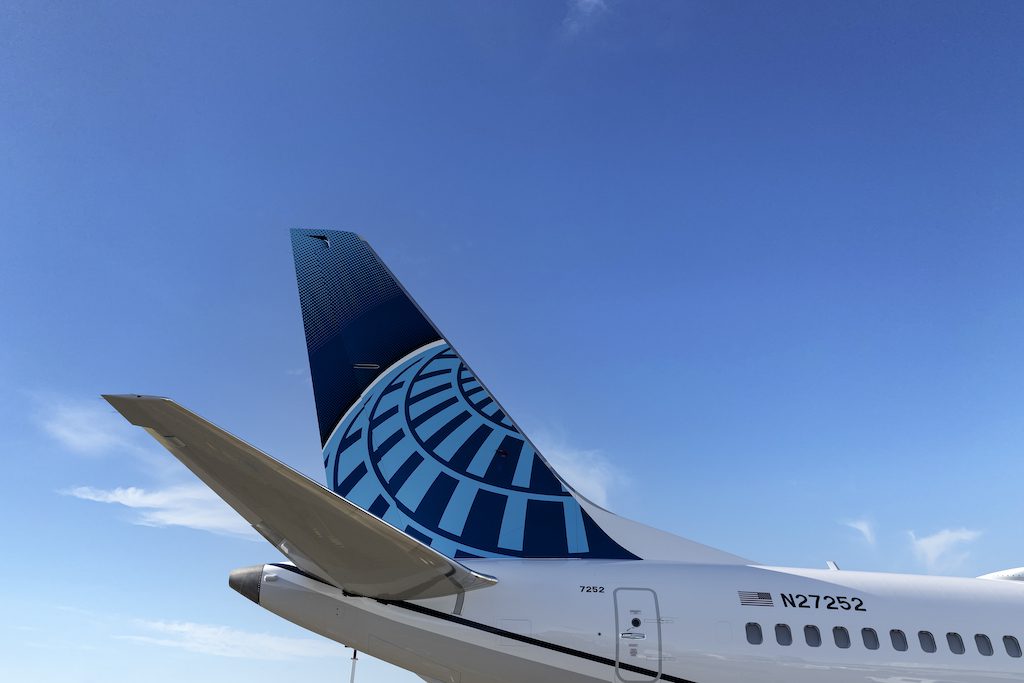
With its new order for 270 narrowbody jets, United Airlines is signaling its commitment to its mid-continent hubs in Denver, Houston, and Chicago, aiming to increase the number of seats available in those cities by 30 percent as the aircraft are delivered between next year and 2026.
The order, the largest in its history and an open secret in the industry for weeks, will be announced Tuesday by CEO Scott Kirby at Newark airport. The scale of the order clearly signals a renewed bullishness about the prospects for airlines after having suffered through the worst year in their modern history.
Even before the pandemic, United Airlines saw room for growth at three of its mid-continent hubs, but during the crisis, while coastal hubs near business centers like New York, Washington, San Francisco, and Los Angeles languished, the mid-continent hubs proved their strength to the carrier, as leisure demand showed more resilience and recovered faster than business demand. By the time the aircraft are delivered, United expects to add as many as 100 departures per day at its three mid-continent hubs, reaching up to 650 flights per day. “Our mid-continent hubs are undersized,” chief commercial officer Andrew Nocella told reporters in advance of United’s announcement today.
The historic order is the largest from any airline in the U.S. since 2011, when American Airlines ordered 460 narrowbody aircraft. United’s order breaks down as 50 Boeing 737 Max 8s, 150 737 Max 10s, and 70 Airbus A321neos. CEO Kirby declined to provide financial terms of the deal, but said the airline “paid less than list prices.” List prices typically do not reflect what airlines actually pay for aircraft, and Boeing is thought to be offering steep discounts as it seeks to recover from the Max grounding and issues with its 787 and 777X programs. Airbus, citing demand for its A320-family aircraft, recently said it is not deeply discounting its aircraft. Both the 737 Max 10 and A321neo list for about $130 million each.
Combined with previous orders, United is expecting to take delivery of 500 aircraft between now and 2026. Of these, 300 will replace aircraft that are retiring — including 50-seat regional jets, Boeing 757-200s and -300s, which are reaching the end of their service lives, and older A319s and A320s. After the re-fleet, United will relegate 50-seat regional jets to smaller markets, comprising just 10 percent of United’s daily departures, down from about 30 percent now, Nocella said. United expects to retire 200 50-seaters, he said.
As Airline Weekly previously has reported, United needed to play catch up with its rivals, American and Delta Air Lines. The average age of those carriers’ fleets is 10. 8 and 13.5 years respectively. United’s mainline fleet average fleet age is 16 years, and its narrowbody fleet averages 10 years old, with three aircraft types totaling 185 aircraft — Airbus A320-family aircraft, Boeing 737-700s, and 757-200s — averaging more than 20 years old. “United is clearly between a rock and a hard place, given the need to re-fleet due to aging aircraft, but the desire to deleverage,” MKM Partners analyst Conor Cunningham wrote in a note to investors.
The 200 aircraft United is adding for growth will fuel its expansion in its midcontinent hubs as well as increase gauge size at Newark and San Francisco, where the carrier is hemmed in by runway constraints. The carrier also expects to add 30 widebodies — Boeing 787s and 777-300s — to its fleet from previously announced orders by next summer. And it has 50 Airbus A321XLRs on order that will replace its retiring 757-200s on international flights.
The new aircraft will feature seatback entertainment and Wi-Fi, and United plans to retrofit all its narrowbody with seatback entertainment by 2025. By the end of the re-fleeting, United says it will increase the number of premium seats it flies daily by 75 percent over 2019. To support the airline’s growth, United says it expects to add as many as 25,000 frontline employees to its workforce by 2026.
United’s Kirby is confident about the strength of the post-pandemic recovery. The airline expects to be profitable next month and reports that domestic demand is almost back to pre-pandemic levels. Business demand is still down more than 60 percent, and longhaul international demand is down even more, Kirby admitted.
But Kirby is bullish that pent-up business travel demand will burst forth after Labor Day, a sharp contrast from Southwest’s Gary Kelly, who says it could take as long as five years for business travel to return to pre-pandemic levels. The International Air Transport Association forecasts that international travel will not return to pre-pandemic levels until 2024.
Photo Credit: United is adding 270 jets, including Boeing 737 Max 8s like this one, over the next five years. United Airlines
"about" - Google News
June 29, 2021 at 05:01PM
https://ift.tt/3h32hcr
What Does United’s Historic Jet Order Say About the Recovery? - Skift
"about" - Google News
https://ift.tt/2MjBJUT
Bagikan Berita Ini














0 Response to "What Does United’s Historic Jet Order Say About the Recovery? - Skift"
Post a Comment